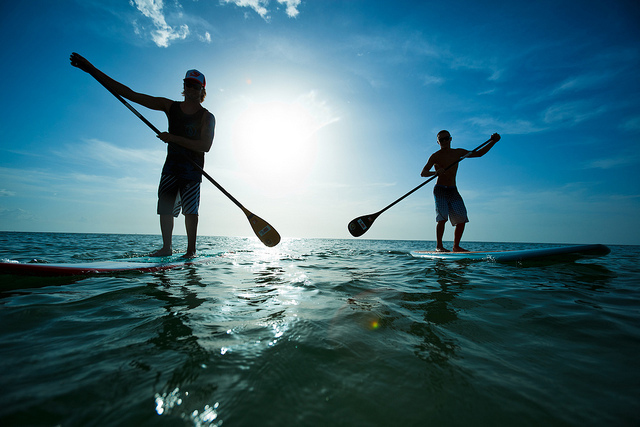The Beginner's Guide to Stand-Up Paddleboarding
Posted by Goggles n More on 30th Oct 2014
Shop Prescription Sports Sunglasses

Stand-up paddleboarding is a unique sport that allows you to traverse across the water with nothing more than a board and paddle. Unlike surfing or kiteboarding, just about anyone can pick up a paddleboard and make their way around calm waters without much effort. With that said, you'll still need to follow some basic rules when you're out on a stand-up paddleboard. If you're interested in giving it a shot, keep reading and we'll go over some critical paddleboarding tips for beginners.
What You'll Need
Before you start, you'll first need to pick up a few basic tools for the sport of paddleboarding. In addition to an entry-level paddleboard, you'll also need a life jacket and a paddle. These are all items that can be purchased from most outdoor sporting goods stores. Once you've picked them up, you can enjoy paddleboarding at any ocean beach, lake or river – assuming the waters are calm.
Depending on how long you want to be out on the water, you may also want to bring a pair of sunglasses, sunscreen lotion and a personal cooler with some drinks and snacks on it. Being out on the water for long periods of time can easily sap your energy, which is why it's a good idea to have some snacks on hand.
Getting Started
Paddleboarding is much easier when it's done on calm waters with minimal wind and currents. If the conditions are rough, wait for the waters to calm down before taking your paddleboard out for the first time. While stand-up paddleboarding can certainly be done in these conditions, it's much more difficult, especially for beginners.
Once the waves have subsided, lay down stomach first on your paddleboard and take it out past the breakers by paddling with your arms. Now, slowly stand up using both of your feet. You may have some trouble keeping your balance, but you'll eventually learn the proper location to plant your feet.
Hopefully you're able to stand up and keep your balance without falling off. If you're still having trouble, try spreading your feet further apart, as this naturally lowers your center of gravity. Just remember not to place your feet all the way on the edge of your paddleboard. Another tip that's sure to help beginners is to keep your speed up when paddleboarding. Once you've developed some speed and momentum, you'll find that it's easier to stand up without falling down.




